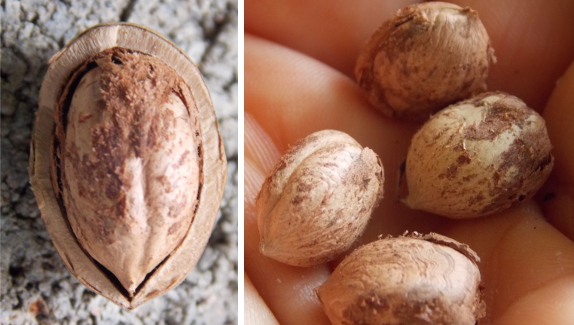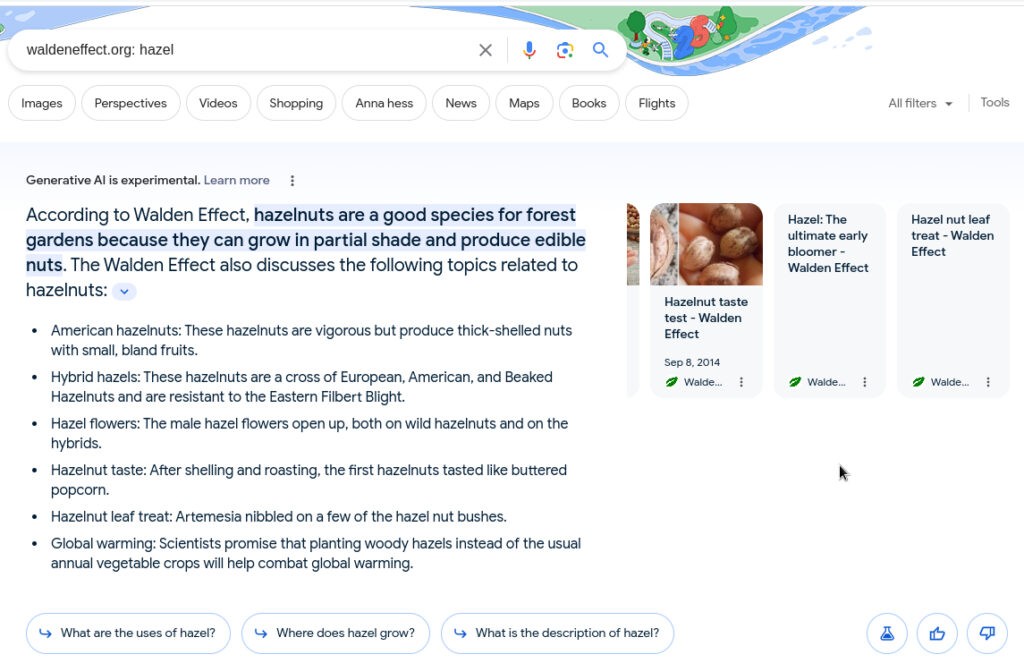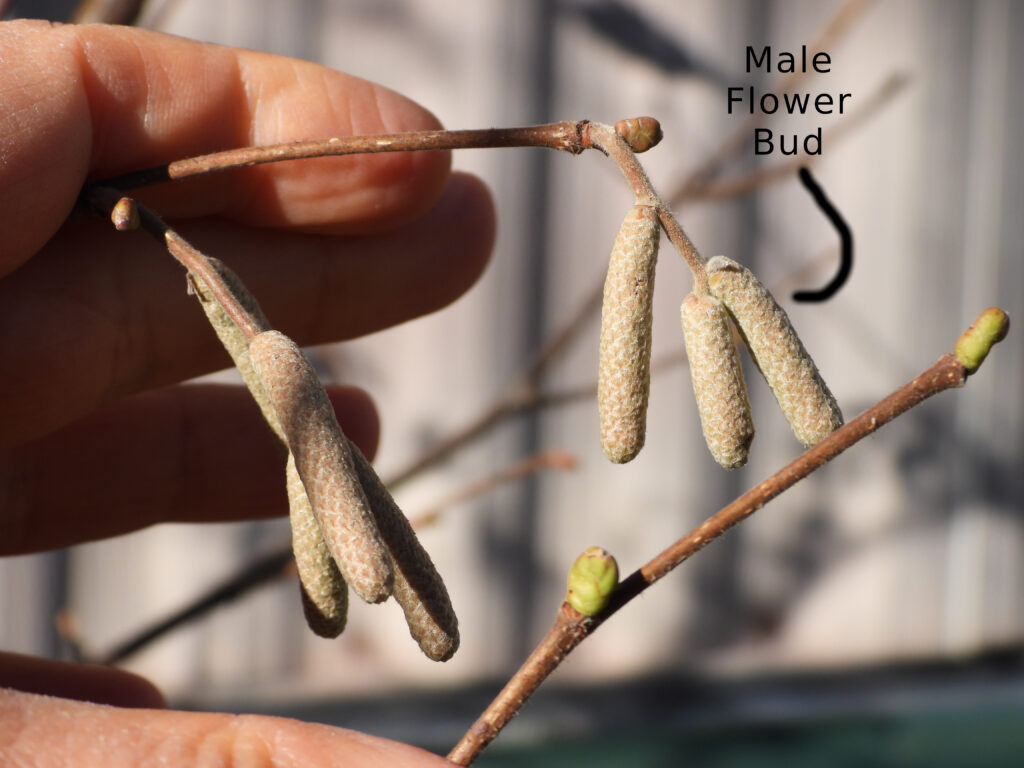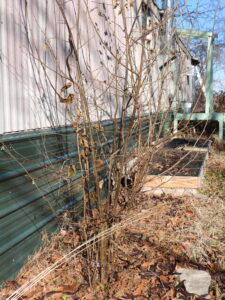
Hazelnuts have a lot of potential as a low-work garden plant, but blights make straight-up European hazelnuts problematic in the eastern United States. Luckily, various institutions have been experimenting with combining the disease-hardiness of American hazelnuts with the productivity of European hazelnuts over the last decade, and we jumped on the bandwagon very early on.
Our previous hazel experiments

I used Google to search through our old posts to refresh my memory, and they actually got the facts right. But what’s most relevant to this post is:
- Our very first try at hybrid hazelnuts was an unnamed variety from the Arbor Day Foundation. It bore fruit after five years, but the nuts were so small and the shells so thick, they weren’t really worth cracking! (Even my mom agreed…)
- Our second try was two named varieties planted in Virginia. For all, I know, they may still be going strong. But we moved away. No data there!
Which brings us to…
A new hope

 In April 2020, we planted two hybrid hazel bushes here in Ohio: Yamhill and Dorris, both from Burnt Ridge Nursery. As expected, both have grown well with very minimal attention — I think I’ve kill-mulched under them every other year. Both are shaping up to look much more like European hazelnuts (tall and less bushy) than like American hazelnuts (shorter and with lots and lots of trunks). But what about the nuts?
In April 2020, we planted two hybrid hazel bushes here in Ohio: Yamhill and Dorris, both from Burnt Ridge Nursery. As expected, both have grown well with very minimal attention — I think I’ve kill-mulched under them every other year. Both are shaping up to look much more like European hazelnuts (tall and less bushy) than like American hazelnuts (shorter and with lots and lots of trunks). But what about the nuts?
Many plants with separate male and female flowers start out male only as they mature since it’s a lot less work to produce pollen than fruit. Sure enough, in spring of this year (2023), the Yamhill produced its first male flowers. Now, the Dorris is following suit while the Yamhill is completely coated in both male and (I think) female flower buds.
So it looks like 2024 will be the test! Do these more carefully selected hybrid hazels produce nuts with shells thin enough so I don’t have to pull out my hammer? Stay tuned for a taste test this coming fall!